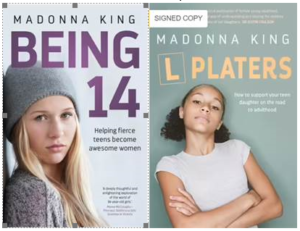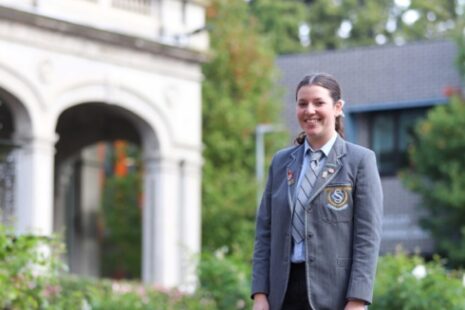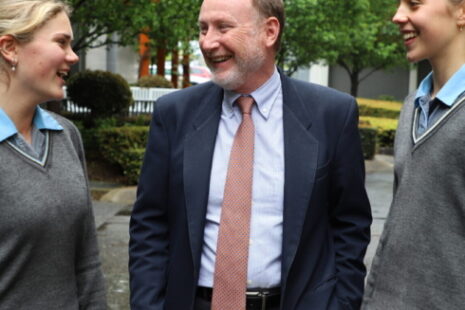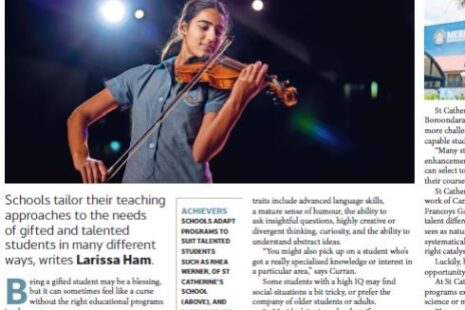Where do our girls sit in the post-COVID world?
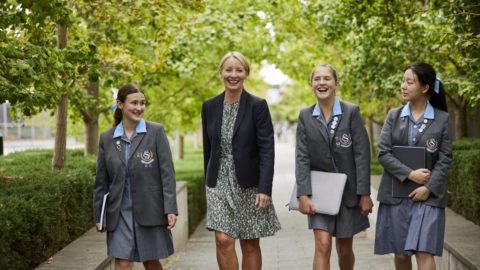
Author and journalist, Madonna King provides an insightful reflection into the complexity of educating and raising daughters in the post-COVID world in her podcast hosted by the Alliance of Girls’ Schools Australasia – recently, rebranded International Coalition of Girls’ Schools. Families may be familiar with the books Madonna King has released in recent years, Being 14, Ten-Ager and L-Plater.
Madonna King poses the question: Where do our girls sit in the post-COVID world? 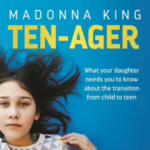
From views on changing the culture of the Australian Parliament to outnumbering boys in university engineering courses, taking their place in political cabinets, and still being paid less, across the board, than men, King highlights a girl’s voice is indeed important, but is it loud enough and if girls themselves, think their voice is loud enough?
The normality of life came to a screeching halt for girls during 2020-2021. Calls to Kids Helpline over this period skyrocketed, with 70% of the calls coming from girls. The only recorded drop in terms of issues was in the category of ‘bullying.’
Following 3,000 interviews with students, teachers, parents and principals, Madonna King proposes five ‘ironies’ that teenage girls are currently experiencing, where they have been delivered enormous opportunity but perhaps not being able to make the most of them. For the benefit of our St Catherine’s readers, I shall expand on the five ironies over two editions of the Blue Ribbon.
Irony One : Girls want ‘independence’ but find solace in a clearly defined and exclusive friendship group. That being, girls try to embrace their independence, yet land in a big ‘vat of group thinking,’ and whilst reorienting themselves away from their family during their teenage years, they want to look and think like everyone else.
King’s research highlights that girls strive too much for perfection, focusing on what they see as their own imperfections. One example was found when interviewing 10-year-olds who want to change the things they cannot: the colour of their skin, curly verses straight hair or their height. The two most commonly mentioned words by 10-year-olds in King’s research were ‘fitting in.’ Girls want to look like the girl at the next desk with the same ponytail and the same height.
The question for parents and educators alike is how do we help girls stand confidently aside from the pack? Should we be celebrating their differences more to help them understand the individual journey? To illustrate this, King uses a swimming analogy:
At the age of seven or eight, girls are all on the same starting block and they are all going to finish that year at the end of the same pool. However, what they need to understand is how they get to the end of the pool is their decision – freestyle or backstroke, go like a ‘bat out of hell’ or dog paddle? Stop and chat with the girl in the next lane and swim together as a team? The one thing they cannot do is swim in the lane of the girl next to them. The biggest challenge facing girls, almost unanimously, was a lack of self-confidence. Why? King believes they are managing the expectations of parents and peers and most notably, navigating an online world where social media feeds are brimming with what they believe they are not.
Irony Two: Where girls can have 1,000 friends on social media and not a soul to talk.
Inspector John Rouse, Head of Taskforce Argos, responsible for the investigation of online child exploitation and abuse, suggests if you plan to have a pool party for your 14-year-old, and handed her the printed invitation, and then suggested she give it to her closest 1,000 friends, it simply will not happen. However, routinely girls in their mid-teens have 1,000 Instagram followers. If a teen has 650 friends on one social media app, and each of those friends has 500, that means conceivably 325,000 people can contact her!
King goes onto explain the existence of being ‘left on red’ – that being when a girl sends a text to a friend late at night, the sender sees the read receipt but does not receive a reply until morning. This delay in response might be because the recipient was half asleep or not allowed to answer or even a parent read the text; but she is deemed responsible for her friend being ‘left on red.’
The problem is not the phone, it is clearly how it is used or misused. What would our girls be doing between 7.00pm and 8.00pm tonight if they did not have their phone? The phone offers them the world, yet it steals so much from them. What would we all be doing if we were not on our phones?
Too often girls feel utterly alone. Irreconcilably smartphones have changed how friendship is navigated and the mass loss of socialisation skills, where so many young girls do not know how to be a friend. What are the tools and what is the language of friendship today? Girls can struggle with the crossover from being friendly, to actually being real friends. At 13, 14, 15 and 16 years of age, it is easier to send an emoji, but much harder to navigate a bond and conversation that requires patience, forgiveness and understanding differences.
Girls need to learn how to not exclude others, and value forgiveness when one of their peers makes a mistake. We have all had arguments with friends, but the friendship survives because it is bigger than the argument. Girls need to understand boundaries better for what they will accept or what they will not accept in a friendship. They need to make that decision, away from their friends, in the cold light of day. Girls need to learn the language to communicate with their friends. They need to actually practise the phrases and learn to use them in those tricky moments.
In my conversation today with Junior School Psychologist, Dr Lena Wintermantel, we discussed the proactive wellbeing programs being conducted in Barbreck, starting with our Year 4 students. Learning the language of friendship, forgiveness, turn-taking and navigating conflict are all skills 10-year-olds are capable of understanding and learning, and can build upon in later years.
I will elaborate on King’s research, including Ironies three, four and five, in future Blue Ribbon articles next term. Parents looking for some holiday reading are encouraged to access Being 14, Ten-ager or the recently released L-Platers.


